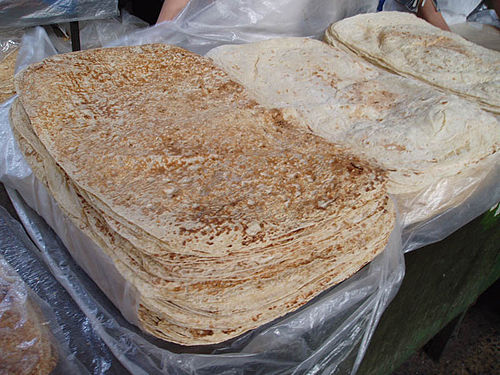 | This article has multiple issues. Please helpimprove it or discuss these issues on thetalk page.(Learn how and when to remove these messages) (Learn how and when to remove this message)
|

The following dishes and beverages are part of the cuisine of theCaucasus, includingArmenia,Azerbaijan,Georgia and theNorth Caucasus.



























Non-alcoholic


The Russian term,shashlik, has an interesting etymology: it would seem natural for the word to be borrowed from one of the Caucasian languages. But no, the Georgian for it ismtsvadi, the Azerbaijani,kebab. Shashlik is aZaporozhye Cossack coinage from the Crimean Tatarsheesh (spit), brought to Russia in the 18th century, afterField-Marshal Mienich'sCrimean campaign. Prior to the 18th century, the dish was calledverchenoye, from the Russianvertel, spit.
ԲԱՂԱՐՋ, հայկական տոնական և ծիսական հաց։ Լինում է աղի ու անալի, որոնք ժող․ հավատալիքներում ունեն մոգական նշանակություն։Bagharj — Armenian festive and ritual bread. It can be salty or unsalted, both of which hold magical significance in folk beliefs.